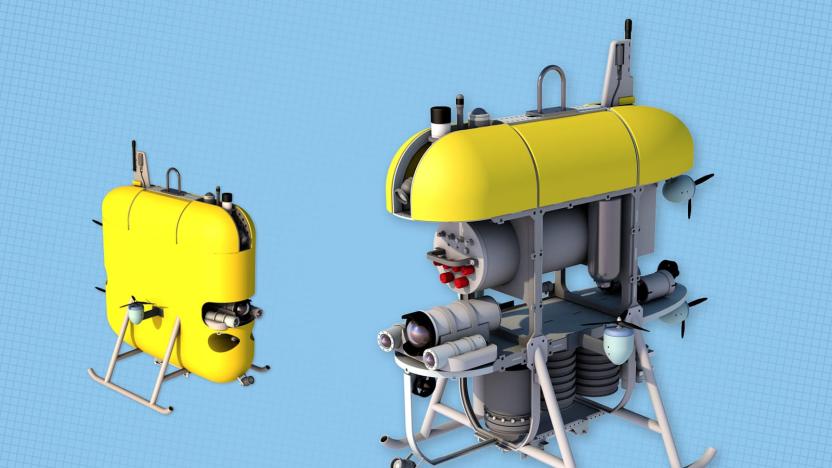woodshole
Latest

Sneaky deep sea robot will take pics of fish without spooking them
Robots typically aren't good choices for studying deep sea animals like jellyfish -- not when their light, noise and movement can scare away those creatures. Researchers at Woods Hole Oceanographic Institution may have a far less intrusive option, though. Their planned Mesobot observer is designed to move as quietly as possible while collecting data about aquatic life. The four-foot-tall robot moves using six large but low-power thrusters that won't cause a stir, and its LED lights can switch to red (which many deep sea species can't see). A two-day running time should also minimize attention-getting trips to the surface.

Undersea robots find key clue to a mysterious shipwreck
Robots just helped shed light on a maritime tragedy. The US Coast Guard, National Transportation Safety Board and Woods Hole Oceanographic have used both an autonomous underwater vehicle (AUV) and a fiber-controlled craft to find the voyage data recorder of the El Faro, a cargo ship that sank near the Bahamas during Hurricane Joaquin last October. That's no mean feat when its remains are 15,000 feet deep, and the recorder is roughly the size of a coffee can. The recovery should not only help explain the exact circumstances of the El Faro's final moments, but provide some closure to the families of the 33 crew members that lost their lives.

Self-propelled glider uses ocean's heat to power itself
We've seen autonomous ocean gliders before, but the team at Woods Hole Oceanographic Institute has just completed the first successful run of a glider that doesn't require its own power -- instead, it uses the heat difference between the warm upper layers of the ocean and the colder depths to propel itself. Not needing an internal power source let the glider traverse the Virgin Islands Basin between St. Thomas and St. Croix at depths of 13,000 feet over 20 times when it was launched in December, and the team estimates that it could run for another six months if necessary. The ocean's heat differential is a "virtually unlimited energy source," according to one Woods Hole researcher -- hmm, beach-charger, anyone?[Thanks, Charlie]

NASA funded robots to search for life under Arctic ice
In a mission that is apparently similar to searching for life under the ice of Jupiter's moon Europa (sans the space travel part), three robots are set to start a mission to explore the underwater hot springs under the ice of the Arctic: because someone else did the Antarctic last year. On a 40 day expedition in July, researchers from Cape Cod hope to use three new robotic vehicles -- two that can operate without cables under ice -- to find life that resides in the hot streams along the techtonic boundary between Eurasia and North America. Although the robots can descend over 3 miles under the water working just meters from the bottom to photograph objects and collect samples, the task of the NASA-funded $450,000 Puma and Jaguar robots will be hindered by the rough terrain and their inability to surface through the ice. Sounds like NASA's got quite a while to go until it can submarine around Europa -- they probably won't be able to surface there at all.
